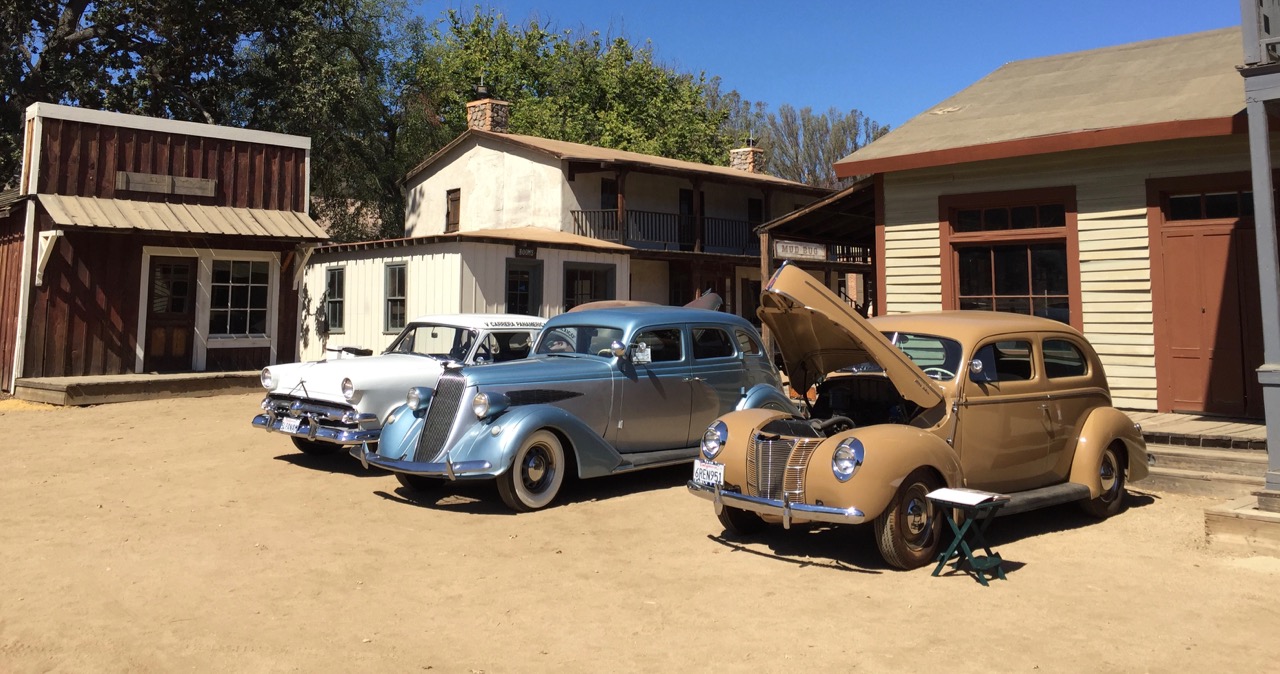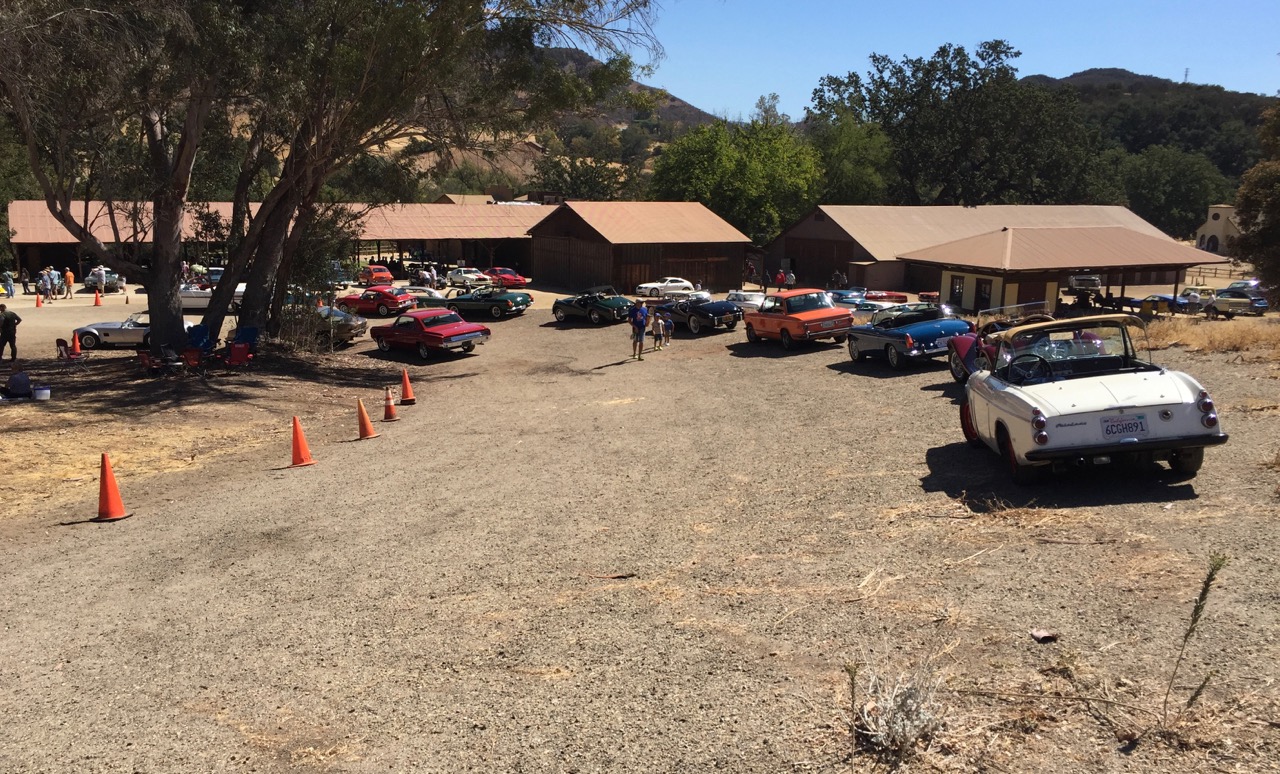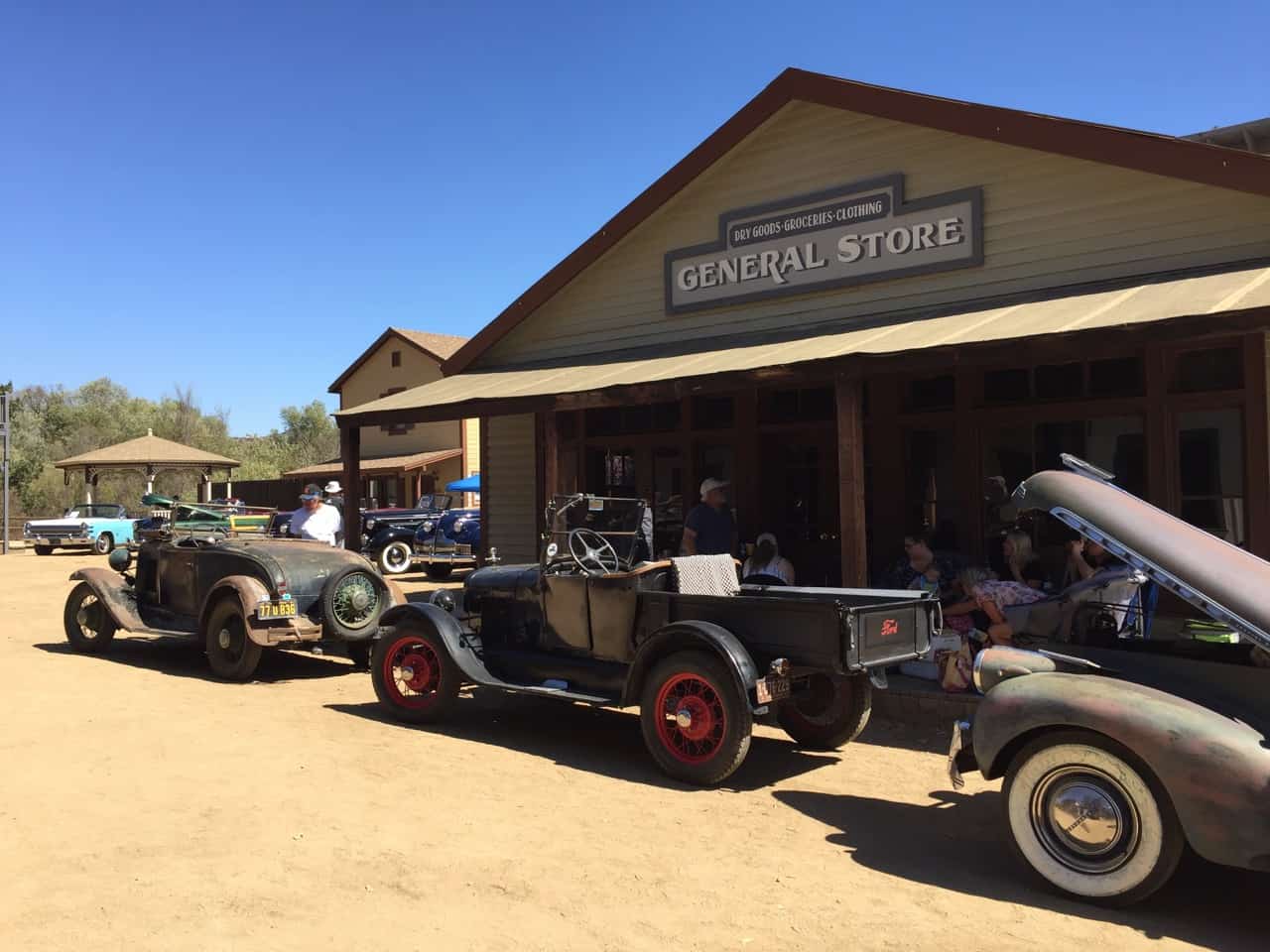
In September of 1948, Al Moss of Goleta, California, bought the MG TC he owned until we lost him a few years ago, opened his own MG store and, in January of 1949 organized California’s first sports car rally.
Participants who ran through the canyons included Keenan Wynn (already a noted dry lakes hot rod racer), Larry Parks (a recent Oscar nominee for The Jolson Story, and Tom Bamford (character actor and stunt driver) — all three were veteran motorcycle racers.
A competitor consensus inspired the founding of the Foreign Car Group as a sanctioning body for guys who played with sports cars.
Racing sports cars were virtually all licensed for the street in the early 1950s and were driven to and from events. It began to get a little scary. Mulholland Drive became a practice course for racers and would-be racers. Paul Newman and Steve McQueen were both real racers and became famous for their exploits among the Mulholland after-midnight set. James Dean was a ridge-line phenom in his Porsche Speedster and when Giant afforded him a Porsche 550 Spyder the risks went stratospheric.
A “less public” place for racing rehearsals was soon required — we hesitate to say “safer.”
The California Sports Car Club (forever: Cal Club) held its first closed-circuit race at the Palm Springs Airport in April 1950. There was an event in Apple Valley in 1951.

Racing circuits were laid out on blocked-off urban streets or public airports like those at Torrey Pines north of San Diego, and in Palm Springs. Future World Driving Champion Phil Hill raced and won in his MG TC at Carrell Speedway, an oval dirt track made for sprint cars in Gardena.
The search was on for something more authentic.
During the summer of 1955, the west coast Singer Owners Club (a rare-in-America English car) organized the Agoura Hill Climb on a private dirt road. The event brought 160 entries and 2,000 spectators for a brief blast up the twisting dusty incline. The irregular off-roaders included Jaguar XK-120s, Austin-Healey 100s, a couple of rarely seen Porsches, a new Ford Thunderbird, and even a fabulous Ferrari, but the winner was Duffy Livingston’s V8-powered Model T Ford “Eliminator” just ahead of Tom Bamford’s new Cadillac-powered Allard J2X racecar. Cal Club got the message.
An ex-pat Brit racer named Ken Miles was a mechanic for Roger Barlow. After some groundwork by Cal Club board member Joe Weissman, Miles and Dick Van Laanen took a Volkswagen demonstrator out to the Paramount Movie Ranch where they met club race coordinator Al Papp and proceeded to layout a racing circuit through the brush and live oaks — at speed. According to Van Laanen, Miles only drove “at speed” and used up the new Volkswagen in the challenging search for a racecourse.
A 2,700-acre parcel of the 17,700-acre 1802 Spanish land grant Rancho Las Virgenes became part of Paramount Pictures in 1927. For the next 25 years it hosted many of the great characters from the art of film. And it became colonial Massachusetts for The Maid of Salem, ancient China in The Adventures of Marco Polo, a South Seas Island for Ebb Tide, among its over-200 film and television productions, and with at least as much drama became a little piece of Sicily for the real life Targa Florio-like Paramount Ranch Road Racing Circuit.
There were only seven races at the Ranch, two for U.S. Auto Club stock American sedans, and five for Cal Club sports cars. The entry lists are a who’s who of American racing with a fascinating orchestration of movie and television personalities everyone recognizes.
Mostly it was fun with cars and characters. An amateur status in a racecar was only made possible by a professional success in some real life diversion.
The National Parks Service has managed Paramount Ranch for years, and shooting locations are now found in gifted imaginations and digital files. Some physical history remains on the Ranch, even some pavement of the old racing circuit can still be found.
The historic canyons that carried fans and racers from the Ventura Highway or the Pacific Coast Highway to the Mulholland Highway are active today — or tonight — and the Ranch parking lot remains a cooling-off destination for overheated Jaguars and their turbocharged modern counterparts.
Saturday, the Park Service organized a gathering of car folks for a presentation by Ranger Tom, the recently retired unofficial track historian, and opened the western village as an exhibit for any and all enthusiast vehicles. It was 100 degrees and the Fabulous 50s non-club ex-racer group had brought all the historic racers and their historic drivers only a week before, so they didn’t make the return trip, but there were quite a number of vintage sports car drivers who did.
Some had some knowledge of the old track and I made contact with one of them mid-hike around the remaining shards of the old racing circuit. A former staffer for Rolls Royce on the left coast, he had arrived in his perfectly restored MGTF.
That extended chat was the equal to the one with the guy who was an annual spectator at both the Isle of Man Manx TT and the Goodwood Revival.
I would not want to have missed those even if we had been blessed with rain. If the Parks Service makes it an annual event it would be worth the trip. We’ll call it “Cars & Characters.”
Photography by Larry Crane


















